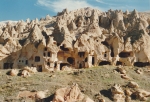The Nature Of Sea Level
Abstract Category: Science
Course / Degree: master of science
Institution / University: Private, Germany
Published in: 2014
The nature of the sea-level is such that it can never be permanently fixed. The changes in the height, up or down, is so slow that it takes centuries to notice. And it continually changes, even day to day.
The causes for non permanence of the sea level are many. They lie under the Earth, on and about the surface, in the atmosphere as well as in outer-space. Besides there are many causes that, having very short periods, appear and disappear before one had noticed them. Then there is a resultant of the combinations of all the factors. As such the causes for the changes in height will always be subjected to continuous corrections.
Despite the uncertainties, there are many causes that are visible to the naked eye. And they can, when observed carefully, indicate whether sea-level will have a rapid change.
One of the indicator that is visible in everyday life is the amount of botany available on the Earth´s surface. When they are much the sea-level is lower. And the level climbs when latent desertification and desertification spread forcing the depletion of botany. The phenomenon shows that the sea-level depends much on the volume of biology present in all spheres of the Earth .
The second phenomenon is the amount of water frozen. Frozen waters which are not floating in the open seas and oceans always reduce the sea-level. They are sheets of ice on the polar-regions sitting on land-masses and not floating, glaciers on the mountain tops, frozen lakes, permafrost, circulating frosts, etcetera.
The third is the amount of water found underground and on the surface. Underground has much water stored in cavities, fissures, fractures pores in the rocks. On the surface there are many lakes that hold enormous amount of water. They can be fresh water-lakes as well as salt-water-lakes. Besides are the rivers large and small. If they have a good height in water-level then they hold much water. For example, if the rivers like Nile, Mississippi, Ganges, Indus, Yangtze were just in average one meter more in height than it is today, the effect on the sea-level will be enormous. In addition, there are waters held on surfaces in form of dew or rain water that wets the surface as well as held due to capillary force between fallen leaves, twigs and stones, gravels and silt.
The fourth is the atmosphere which is never free of moisture. The amount of water in the air depends on the amount of water found on the ground that is exposed to the solar radiation, to the winds and the moisture that perspire from biology and other climatic factors. And most importantly there is huge factor caused by burning of fuel in different form that directly goes into the atmosphere and eventually settles in the seas.
And there is an unknown factor whether ice-crystals and hydrogen molecules get pulled into the atmosphere from the space. The hydrogen will combine with oxygen and increase the amount of water, while ice crystals will either melt and come down as rain or fall as snow. And the meteors than burn up in the sky must have an effect. Then can reduce the radiations falling on to the Earth and influence the Earth´s temperature.
Atmospheric factors are very difficult to measure and to keep record. But they continually have an affect, when only small, on the level of the seas.
The other two major factors are found in the depths of the Earth and high out in the space. In the space many things run which have direct effect on the Earth. For instance, is the Sun permanent in its radiation? Or is it moody? Are there clouds of dust, fallen pieces of tails of comets and large asteroids and meteoritic storms that come between the Earth and the Sun and even storms of gases? All these factors must have profound effects on the sea-level.
And finally, from the depths, are the volcanism, magma and tectonic movements. Since they are moody one cannot definitely say when they heat and when they are idle. However the sea-level changes accordingly. They throw out water from the volcanoes and geysers. They heat the soil from under which makes the region to expand, and volcanism in water heat the water to expand. And tectonic movements can raise as well as sink landscapes.
Paper Keywords/Search Tags:
sea level
This Paper Abstract may be cited as follows:
No user preference. Please use the standard reference methodology.
Submission Details: Paper Abstract submitted by Balasupramaniam Paramahamsa from Germany on 02-Apr-2014 12:01.
Abstract has been viewed 2652 times (since 7 Mar 2010).
Balasupramaniam Paramahamsa Contact Details: Email: eecoltd2@gmail.com
Disclaimer
Great care has been taken to ensure that this information is correct, however ThesisAbstracts.com cannot accept responsibility for the contents of this Paper abstract titled "The Nature Of Sea Level". This abstract has been submitted by Balasupramaniam Paramahamsa on 02-Apr-2014 12:01. You may report a problem using the contact form.
© Copyright 2003 - 2025 of ThesisAbstracts.com and respective owners.

